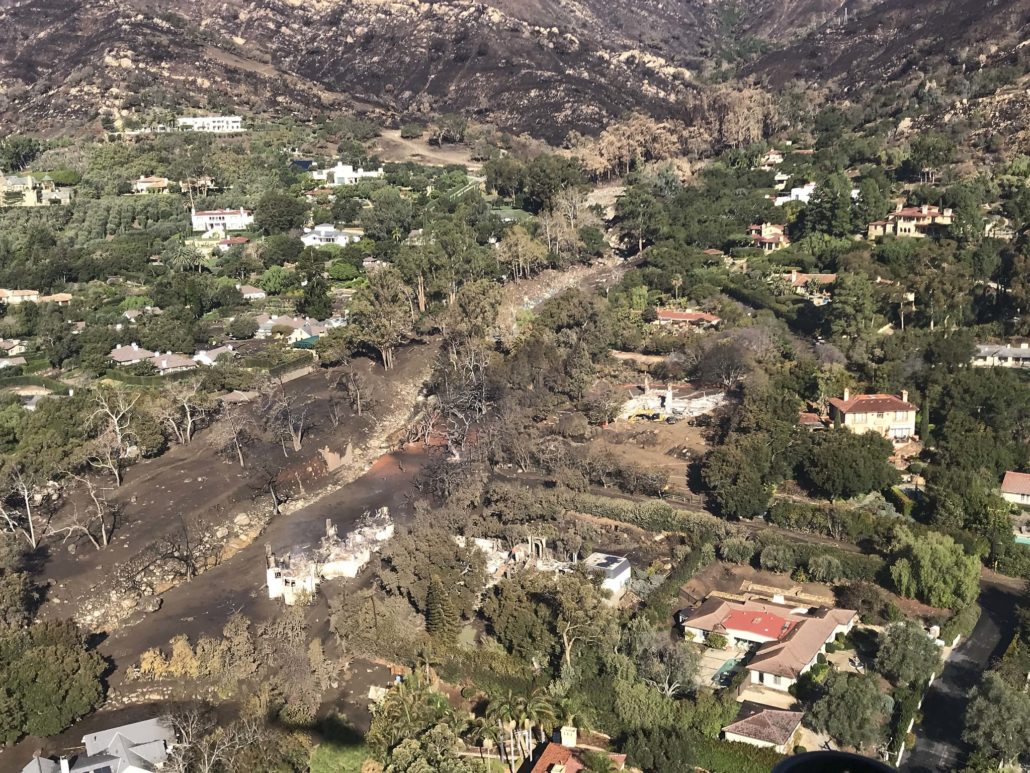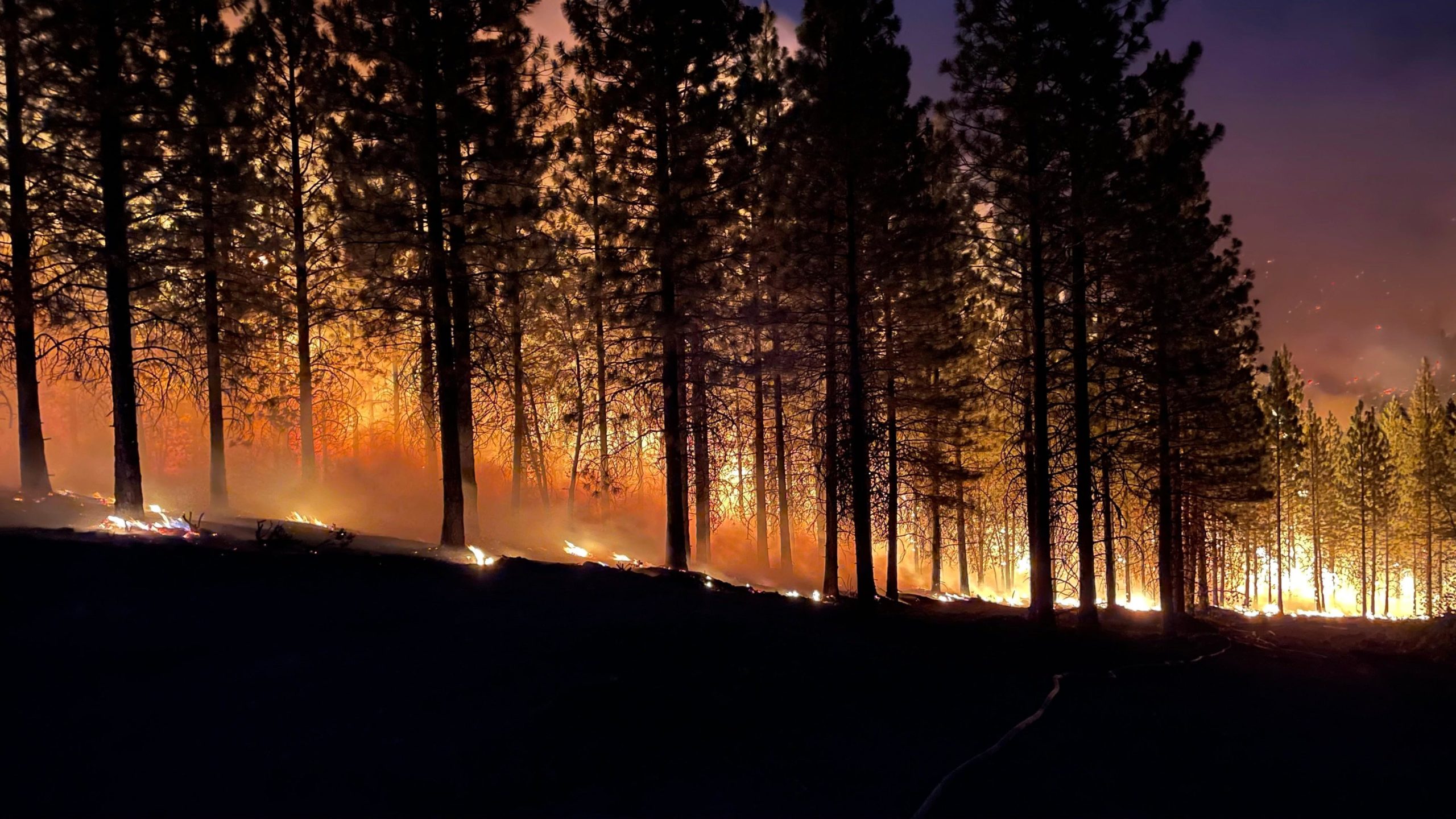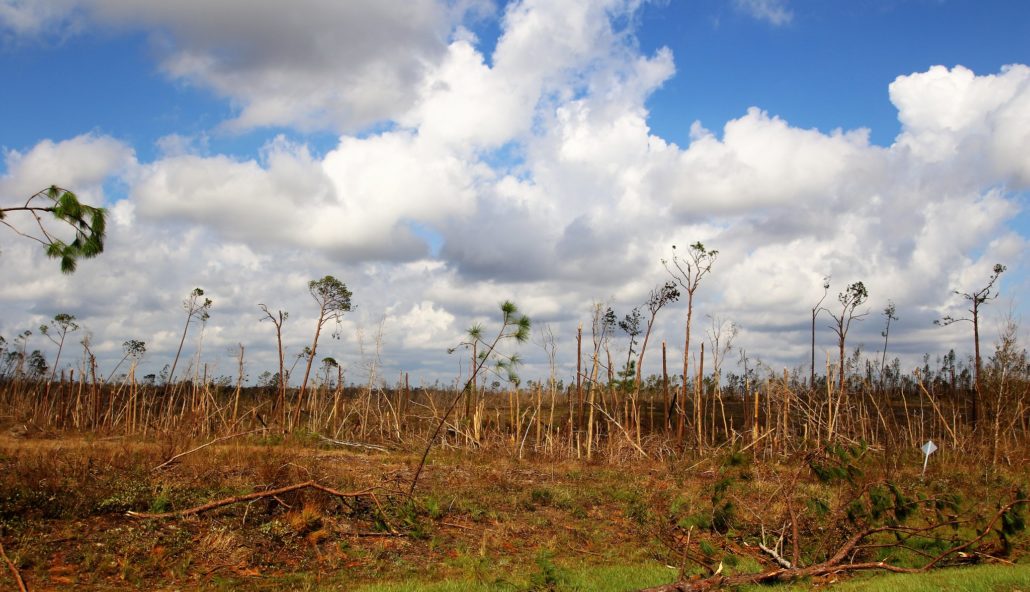Cascading Disasters
Cascading disasters are when a prior disaster either causes a later disaster, or makes a later disaster much worse. Sometimes they have an obvious cause and effect, sometimes it is much less clear.
Examples of Cascading Disasters
The current wildfires just outside Panama City, Florida, known as the Chipola Complex, are considered a cascading disaster, linked to Hurricane Michael from 2018. The hurricane devastated local trees, leaving 3 million acres of dead and downed trees in its wake. As these dead trees died and dried out, they provided a heavy fuel load for wildfires. As a result, the fuel load left behind was about 10 times higher than what would be considered normal for the area. So, when fires started in the area, they quickly became more intense and aggressive than the region would normally see, making it much more difficult for crews to contain. Snags and other hazards left behind from the storm added dangerous and difficult access for fire crews.

A California Air National Guard HH-60G Pave Hawk rescue helicopter with air crews and two elite Guardian Angel pararescuemen from the 129th Rescue Wing, Moffett Air National Guard Base, California, provide search and rescue operations in Southern California, impacted by a mud slides, Jan. 10, 2018. Photo by Staff Sgt. Cristian Meyers (https://www.flickr.com/photos/caguard/29390890287/)
Okay, so storm damage can lead to worse fires. What about the other way around? The Thomas Fire started in December 2017 and burned 281,000 acres in Ventura and Santa Barbara Counties in California. The fire itself was devastating, leaving over 1,000 buildings destroyed. Also, it burned out the vegetation along the mountainous California coast right as the rainy season started. The root systems of this vegetation would normally keep soils from sliding down the coastal slopes during periods of heavy rain. Unfortunately, with the vegetation gone so late in the season that it had no chance to regrow, a massive thunderstorm rolled into the region. Heavy rainfall rates overnight led to massive flash flooding and debris flows, claiming 23 lives and injuring over 100.
Risk Modeling
Most hazard studies and risk models account for single hazards, but thankfully researchers are starting to focus more on consecutive or cascading hazards. For example, the USGS takes every years wildfires and models the landslide risk for the following wet season and beyond. There’s much to learn from thinking this way as wildfires can burn in Hurricane or storm impact areas. As long duration drought and rising annual temperatures have become the norm, there remains a great need and future opportunity for better hazard models. These models will need to be much more complex and maybe even localized. The results could help planners, insurers, developers, and others greatly reduce risk in their work.
Sources:
https://weather.com/news/news/2022-03-11-florida-wildfires-hurricane-michael-trees
https://agupubs.onlinelibrary.wiley.com/doi/full/10.1029/2019EF001425





